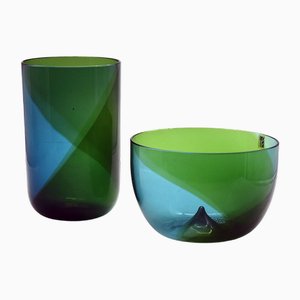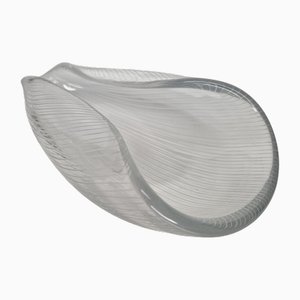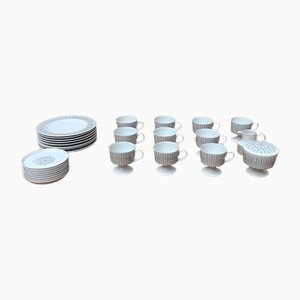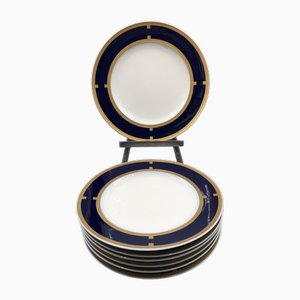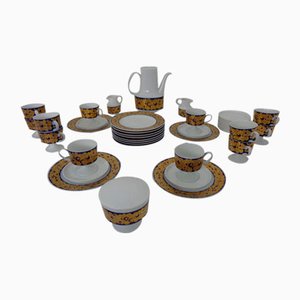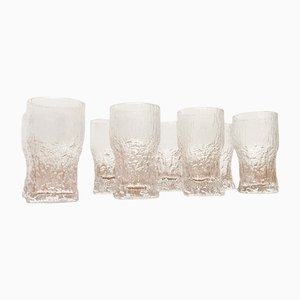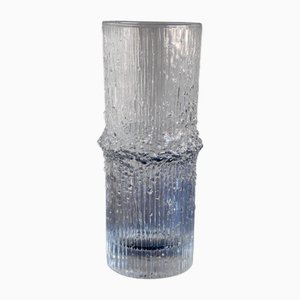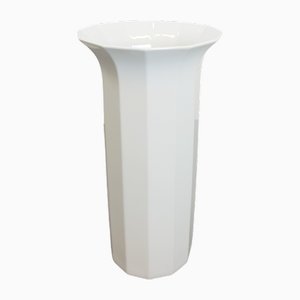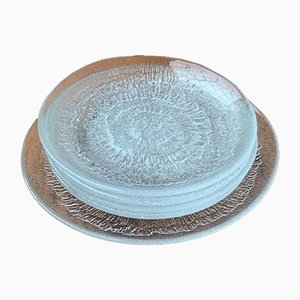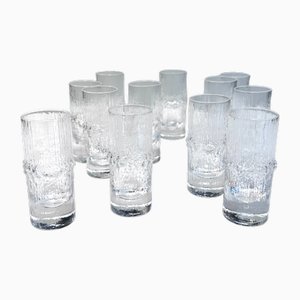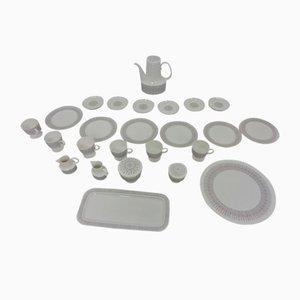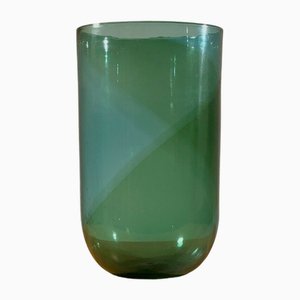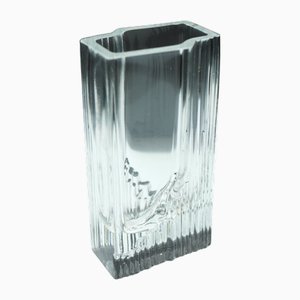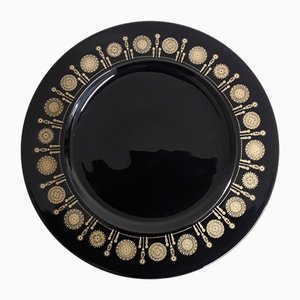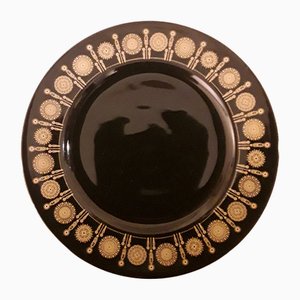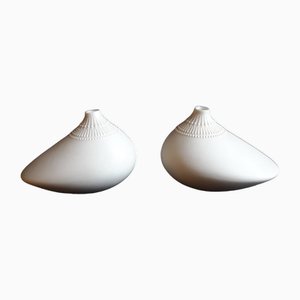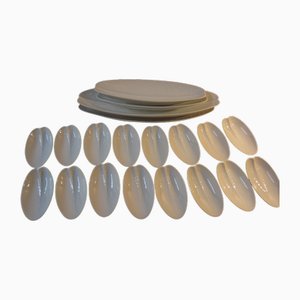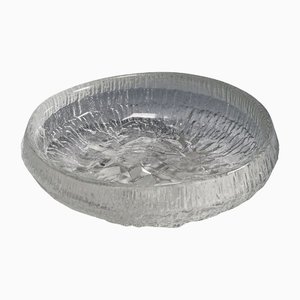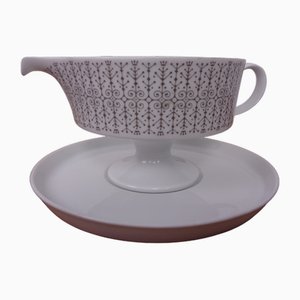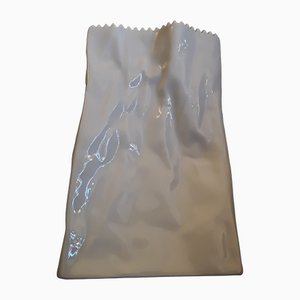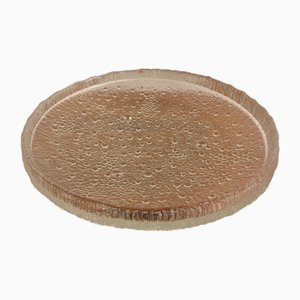
Designer and sculptor Tapio Wirkkala was born in Hanko, Finland in 1915. During the 1920s, he moved with his family to Helsinki, where he went on to study ornamental sculpture at the Central School of Arts and Crafts from 1933 to 1936. Best known for furniture and glassware pieces, his output was prolific—he designed sculptural wooden bowls, plywood objects, silver pieces (most notably for Christofle), exhibition pavilions (including the Finnish installations at the 1951 and 1954 Milan Triennales, for which he earned the Grand Prix on both occasions), and everyday items such as banknotes and cutlery. During his career, Wirkkala also designed glass for and porcelain for Rosenthal. His earlier designs embraced the utilitarian beauty of Finnish Functionalism, but from the 1950s drew inspiration from natural forms.
In 1946, Wirkkala entered a glass design competition organized by Iittala, and shared first prize with Kaj Franck. In 1947, he became the artistic director of Finnish glass factory Iittala Glassworks; his relationship with the company would continue throughout his lifetime. Between 1955 and 1956, Wirkkala worked for industrial designer Raymond Loewy in New York. In 1956, he became artistic director of A-Studio, the design studio of A. Ahlström in Helsinki. In 1966, he established his own studio, Design Tapio Wirkkala.
Wirkkala’s work has been exhibited broadly and is included in esteemed collections around the world, including the National Museum of Modern Art, Tokyo; the Museum of Modern Art and the Metropolitan Museum of Art, both New York; Victoria & Albert Museum, London; Bayerisches Nationalmuseum, Munich; the Nationalmuseum, Stockholm; the Royal Museum, Edinburgh; and the Corning Museum of Glass, in Corning, New York.
Wirkkala passed away in Helsinki in 1985.

